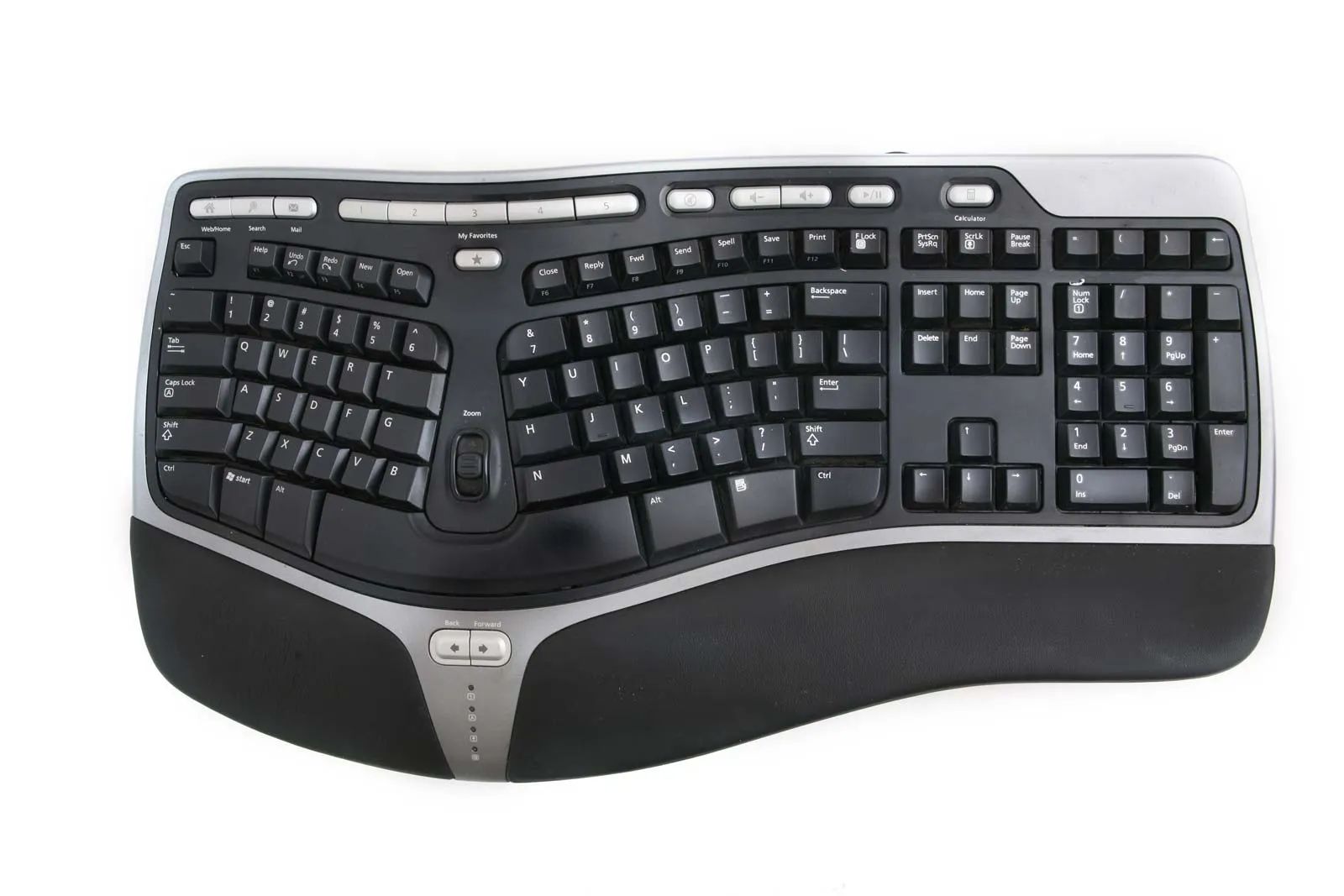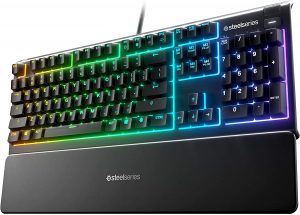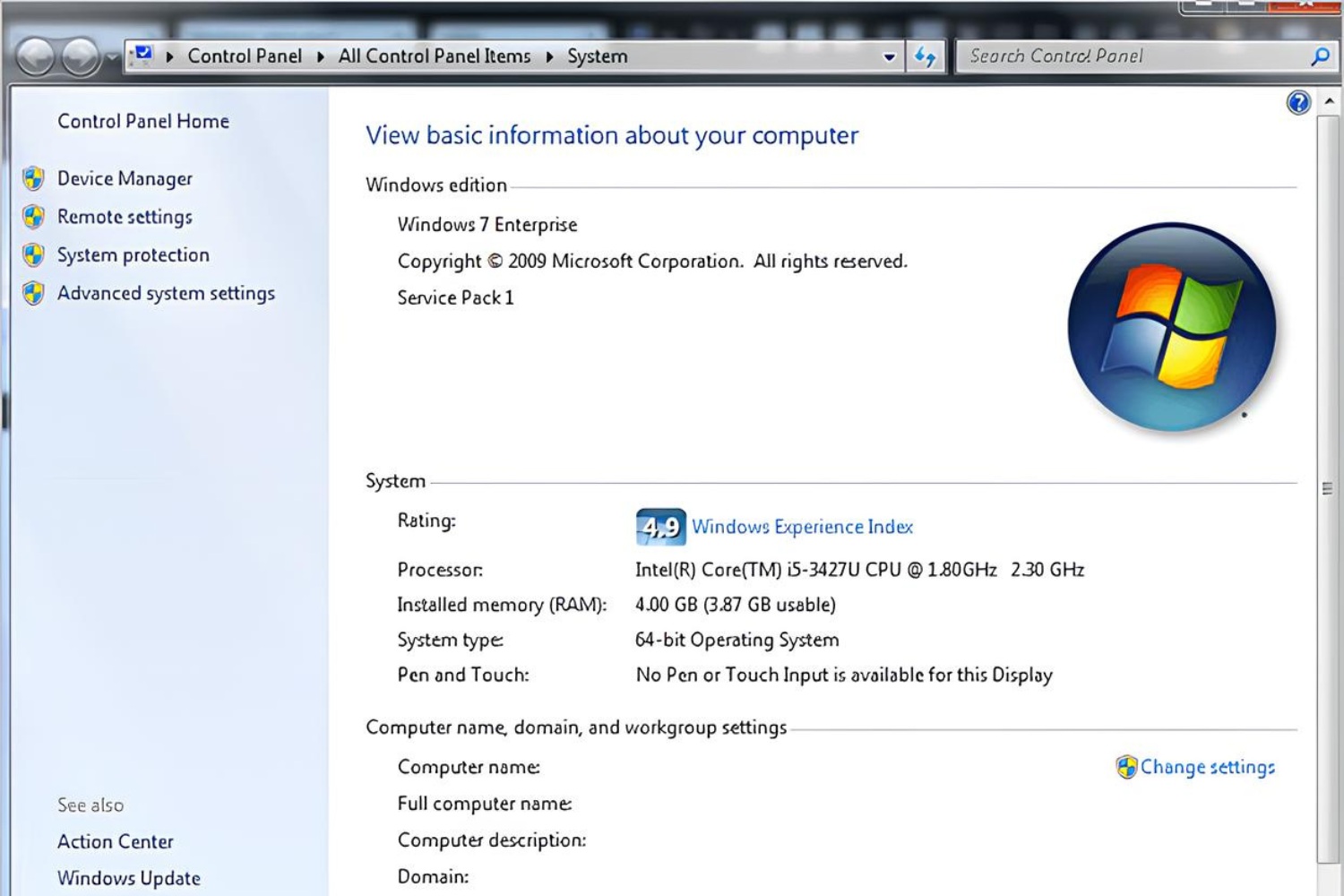Introduction
Keyboards are an essential input device that we commonly use in our daily lives, but have you ever wondered what kind of device a keyboard actually is? A keyboard can be defined as a peripheral device that enables users to input data, commands, and instructions into various electronic devices, such as computers, laptops, tablets, and smartphones.
With the advancement of technology, keyboards have evolved over the years, offering a wide range of options to cater to different needs and preferences. From traditional mechanical keyboards to wireless and virtual keyboards, there is a keyboard type designed for just about any user.
Understanding the different components and types of keyboards can help us make informed choices when selecting the right keyboard for our needs. In this article, we will explore the various types of keyboards available, their functionalities, and how they communicate with different devices.
Whether you are a writer, a gamer, or simply someone who spends hours typing on a computer, understanding the intricacies of keyboards can enhance your overall user experience and productivity.
Definition of a Keyboard
A keyboard is a device that allows users to input text, numbers, and commands into electronic devices. It consists of a set of keys, each representing a specific character, function, or command. The keys are arranged in a specific layout, typically following the QWERTY format, which is the most widely used keyboard layout.
Keyboards are primarily used with computers, laptops, tablets, and smartphones, but they can also be found in other electronic devices, such as musical instruments, gaming consoles, and cash registers. They serve as an essential input tool, enabling users to communicate and interact with these devices effectively.
Traditionally, keyboards were connected to devices using cables, but with advancements in technology, wireless keyboards have become increasingly popular. Wireless keyboards use Bluetooth or RF (radio frequency) signals to establish a connection with the device, providing greater flexibility and convenience.
In addition to physical keyboards, there are also virtual keyboards. These are software-based keyboards that are displayed on a touchscreen device, allowing users to input text by tapping on the virtual keys. Virtual keyboards are commonly found on smartphones, tablets, and touchscreen laptops.
Overall, the keyboard plays a vital role in our daily lives, enabling us to communicate, write, navigate, and control electronic devices. It has become an integral part of our digital interactions, and understanding its functionality and different types can help us choose the right one to suit our needs.
Parts of a Keyboard
A keyboard consists of several key components that work together to facilitate user input. Understanding the different parts of a keyboard can help us navigate and utilize its functionalities effectively. Here are the main components found in a standard keyboard:
- Alphanumeric Keys: These are the keys that represent letters, numbers, and other characters. They are arranged in a specific pattern, usually following the QWERTY layout, which is the standard for most keyboards.
- Function Keys: Located at the top row of the keyboard, the function keys (F1, F2, etc.) serve various purposes, depending on the software or operating system. They are often used for quick access to specific commands or functions.
- Modifier Keys: These keys include Shift, Ctrl (Control), Alt (Alternate), and the Windows/Command key (on Windows and Mac, respectively). They are used in combination with other keys to perform specific actions or shortcuts.
- Navigation Keys: The navigation keys include the arrow keys (Up, Down, Left, Right) and the Home, End, Page Up, and Page Down keys. These keys allow users to navigate within documents, webpages, and spreadsheets.
- Numeric Keypad: Typically located on the right side of a keyboard, the numeric keypad consists of number keys and mathematical operators. It provides a quick and convenient way to input numerical data.
- Special Function Keys: Some keyboards include additional specialized keys, such as multimedia keys (for controlling audio and video playback), volume control keys, and shortcut keys for specific applications.
- Escape Key: The Escape key, often labeled as “Esc,” is a key that allows users to cancel or abort an ongoing operation or close pop-up windows.
- Delete and Backspace Keys: The Delete key is used to remove characters to the right of the cursor, while the Backspace key erases characters to the left of the cursor.
- Enter/Return Key: The Enter or Return key is used to execute commands or confirm inputs. It varies in size and shape across different keyboard models.
These are the primary components found in most standard keyboards. However, it’s worth noting that specialized keyboards, such as gaming keyboards and ergonomic keyboards, may have additional features and unique layouts tailored to specific purposes and user preferences.
Types of Keyboards
Keyboards come in various types, each designed to cater to different needs, preferences, and usage scenarios. Understanding the different types of keyboards can help you choose the one that best suits your requirements. Here are some common types of keyboards:
- Mechanical Keyboards: Mechanical keyboards are known for their tactile feedback and durability. They use separate mechanical switches underneath each key, providing a satisfying typing experience. These keyboards are popular among gamers and enthusiasts who prioritize precision and responsiveness.
- Membrane Keyboards: Membrane keyboards are more affordable and widely used. They feature a rubber or silicone membrane under the keys, which sends electrical signals when pressed. Although they lack the tactile feedback of mechanical keyboards, they are generally quieter and require less force to press.
- Wireless Keyboards: As the name suggests, wireless keyboards do not require physical cables to connect to a device. They use wireless technologies like Bluetooth or radio frequency to establish a connection. Wireless keyboards offer more flexibility and convenience, allowing you to use them from a distance.
- Virtual Keyboards: Virtual keyboards are software-based keyboards that appear on the device’s screen. They are commonly found on touchscreen devices like smartphones and tablets. Virtual keyboards make use of touch gestures or stylus input and provide an on-screen layout for typing.
- Gaming Keyboards: Gaming keyboards are specifically designed for gamers, offering features like customizable backlighting, programmable keys, macro support, and extra functionality for gaming shortcuts. They often have a sturdy build, anti-ghosting capabilities, and ergonomic designs.
- Ergonomic Keyboards: Ergonomic keyboards are designed with user comfort in mind. They have a curved or split layout, allowing for a more natural hand and wrist position, reducing strain and potential injuries associated with prolonged typing. Ergonomic keyboards can be beneficial for individuals with repetitive strain injuries (RSI) or those who spend extended hours typing.
It’s important to note that these keyboard types are not mutually exclusive, and many keyboards may have a combination of features. For example, you can find mechanical gaming keyboards that are also wireless and ergonomically designed.
Choosing the right type of keyboard depends on your specific requirements, whether it’s for work, gaming, mobility, or comfort. Consider factors such as typing preferences, budget, intended usage, and any special features you may need, to make an informed decision.
Mechanical Keyboards
Mechanical keyboards have gained significant popularity among enthusiasts, gamers, and professionals alike. Known for their durability, tactile feedback, and precise typing experience, mechanical keyboards offer a distinct advantage over other types of keyboards. Here are some key features and benefits of mechanical keyboards:
1. Tactile Feedback: Mechanical keyboards use individual mechanical switches under each key, providing a satisfying tactile feedback and a distinct “click” sound. This feedback enhances the typing experience and allows for precise and responsive keystrokes. It gives users a clear indication that the keypress has been registered.
2. Durability: Mechanical keyboards are built to last. The mechanical switches used in these keyboards are known for their long lifespans, often lasting millions of keypresses. The durable construction and high-quality materials result in keyboards that can withstand heavy daily use without compromising performance.
3. Customization and Programmability: Many mechanical keyboards offer customization options, allowing users to personalize their typing experience. Depending on the model, you can often customize keycap colors, switch types, and even the layout. Some keyboards also come with programmable keys that can be assigned custom macros or shortcuts for increased productivity.
4. Typing Comfort: Mechanical keyboards provide a satisfying typing experience, with each key requiring a specific amount of force to actuate. This can be beneficial for touch typists who prefer a more deliberate keypress. Additionally, the tactile feedback can reduce typing errors as users can better feel when a keypress has been successfully registered.
5. Gaming Performance: Mechanical keyboards are highly regarded for gaming due to their fast and accurate response times. The tactile feedback and precise actuation points can help gamers execute complex commands with precision and speed. Key rollover and anti-ghosting features in mechanical keyboards ensure that multiple key presses are accurately registered, making them ideal for fast-paced gaming situations.
6. Switch Options: Mechanical keyboards come with a variety of switch options, each offering a different typing experience. Some popular switch types include Cherry MX, Razer Green, and Gateron switches, each with its own characteristics such as actuation force, clicky or tactile feedback, and noise level. This variety allows users to choose a switch type that fits their personal preference.
Overall, mechanical keyboards are favored by those who value superior typing experiences, precision, durability, and customization options. While they may be slightly more expensive compared to other keyboard types, the investment is often worth it for the enhanced productivity, comfort, and satisfaction they offer.
Membrane Keyboards
Membrane keyboards are the most common and widely-used type of keyboards due to their affordability and versatility. These keyboards utilize a rubber or silicone membrane as the primary component for key activation. Here are key features and benefits of membrane keyboards:
1. Cost-effective: Membrane keyboards are generally more cost-effective compared to mechanical keyboards. They offer a budget-friendly option without compromising basic typing functionalities.
2. Low-Profile Design: Membrane keyboards typically have a low-profile design, meaning the keys sit closer to the keyboard’s surface. This allows for a sleek and compact form factor, making them lightweight and ideal for portability.
3. Quieter Operation: Membrane keyboards are known for their quiet operation. Since they rely on a rubber or silicone membrane to register key presses, they produce less noise compared to mechanical keyboards, making them desirable for shared and quieter environments.
4. Comfortable Typing Experience: The keys on membrane keyboards generally have a softer and more cushioned feel, providing a comfortable typing experience. They require less force to activate, reducing strain on the fingers during prolonged typing sessions.
5. Resistance to Spills and Dust: Membrane keyboards are designed with a sealed membrane layer that protects the underlying circuitry from accidental spills and dust particles. This feature enhances the durability and lifespan of the keyboard, making it more resilient to potential damage.
6. Customization Options: While not as extensive as mechanical keyboards, some membrane keyboards offer limited customization options. These may include multimedia keys, shortcut keys, or additional function keys that cater to specific user preferences and enhance productivity.
7. Suitable for Office Environments: Due to their quiet operation and comfortable typing experience, membrane keyboards are often preferred in office environments where minimizing noise and ensuring typing comfort are important factors.
8. Accessibility: Membrane keyboards are widely available and compatible with various devices, including computers, laptops, tablets, and gaming consoles. They require minimal setup and are generally plug-and-play, making them accessible to a wide range of users.
While membrane keyboards may not offer the same level of tactile feedback and durability as mechanical keyboards, they remain a popular choice for everyday use, general typing tasks, and situations where budget-consciousness and quiet operation are prioritized.
Wireless Keyboards
Wireless keyboards have become increasingly popular in recent years, offering users the flexibility and convenience of no longer being tethered by cables. These keyboards use wireless technologies such as Bluetooth or radio frequency (RF) to establish a connection with the device. Here are key features and benefits of wireless keyboards:
1. Freedom from Cables: One of the primary advantages of wireless keyboards is their freedom from cables. Without the constraints of wires, users are able to position themselves more comfortably and have greater flexibility in terms of placement and distance from the device.
2. Convenience and Portability: Wireless keyboards are highly portable and can be easily carried around, making them ideal for on-the-go use. They are compatible with various devices, including computers, laptops, tablets, and even smart TVs. This versatility allows users to connect to and control multiple devices without the need for separate keyboards.
3. Reduced Clutter: With no cables to manage, wireless keyboards help reduce desktop or workspace clutter. This cleaner setup not only improves aesthetics but also makes it easier to keep the area organized and free from tangled wires.
4. Easy Setup: Wireless keyboards are generally straightforward to set up. Most keyboards come with a USB receiver or utilize built-in Bluetooth in devices. The pairing process is typically quick and hassle-free, requiring few or no additional drivers or software installations.
5. Enhanced Ergonomics: Wireless keyboards offer greater flexibility in terms of positioning and alignment, enabling users to find a more comfortable typing position. This can reduce strain on the wrists and improve overall ergonomics, making wireless keyboards a popular choice for individuals with ergonomic concerns or repetitive strain injuries (RSI).
6. Battery Life: Many wireless keyboards are designed with energy-efficient features, allowing for extended battery life. Some keyboards even have power-saving modes to conserve battery when not in use. This ensures that users can enjoy long periods of uninterrupted typing without frequent battery replacements.
7. Range and Connectivity: Wireless keyboards offer varying degrees of range, typically up to 30 feet or more, depending on the wireless technology used. This allows users to type, control, or navigate their devices from a comfortable distance, making them convenient for presentations, media playback, or operating a computer from a couch or bed.
8. Multiple Device Connectivity: Certain wireless keyboards feature the ability to connect to multiple devices simultaneously. This allows users to easily switch between devices with the press of a button, providing seamless productivity across multiple platforms.
Wireless keyboards provide a versatile and clutter-free typing experience, offering convenience, portability, and improved ergonomics. Whether for work or leisure, being able to enjoy the benefits of a wireless connection can enhance productivity and user experience.
Virtual Keyboards
Virtual keyboards, also known as on-screen keyboards, are software-based input methods that appear on a device’s screen. These keyboards have become prevalent on touchscreen devices, such as smartphones, tablets, and touchscreen laptops. Here are some key features and benefits of virtual keyboards:
1. Touchscreen Interaction: Virtual keyboards are designed specifically for touchscreen devices, allowing users to input text and commands by directly tapping on the screen. This eliminates the need for a physical keyboard and provides a seamless user experience.
2. Portability and Accessibility: Since virtual keyboards are software-based, they are inherently portable and accessible. Devices with virtual keyboards are typically lightweight and compact, making them easy to carry and use on the go.
3. Multilingual Support: Virtual keyboards can support multiple languages and their respective character sets. Users can switch between different keyboard layouts and input methods, making them versatile for communication in various languages.
4. Customization Options: Depending on the device and operating system, virtual keyboards often offer customization options. Users can adjust keyboard layouts, enable autocorrect, and personalize settings like keypress sounds and vibration feedback based on their preferences.
5. Enhanced Accessibility Features: Virtual keyboards can include accessibility features to assist individuals with disabilities. These features may include predictive text, word suggestion, voice input, and other assistive technologies that make typing easier for those with motor impairments or limited dexterity.
6. Space Efficiency: Virtual keyboards make efficient use of limited screen space. They appear only when needed, eliminating the need for a physical keyboard that would take up screen real estate. This is particularly beneficial for devices with smaller screens, where space optimization is crucial.
7. Integration with Gestures and Stylus Input: Virtual keyboards can take advantage of touchscreen capabilities by integrating gestures, like swiping and pinching, for quick typing actions. Some devices also support stylus input, offering a more natural writing experience for users who prefer handwriting recognition.
8. Consistency across Devices: Virtual keyboards offer a consistent typing experience across different devices and platforms. Whether typing on a smartphone, tablet, or touchscreen laptop, users can rely on a familiar interface and layout, enabling seamless transition and adaptation between devices.
Virtual keyboards have become an integral part of touchscreen devices, providing users with a convenient and versatile input method. Their portability, accessibility features, and customization options make them a practical choice for a wide range of users, from casual smartphone users to professionals who rely on touchscreen devices for productivity.
Gaming Keyboards
Gaming keyboards are designed specifically for gamers, offering features and functionalities optimized for gaming performance. These keyboards cater to the unique needs and demands of gamers, providing enhanced controls, customization options, and durability. Here are some key features and benefits of gaming keyboards:
1. Customization and Programmability: Gaming keyboards often come with programmable keys, allowing gamers to assign custom macros, shortcuts, and commands. This helps streamline complex actions and provides a competitive edge by enabling quick and precise execution of gaming maneuvers.
2. Backlighting and RGB Customization: Many gaming keyboards feature dynamic backlighting options, often with RGB (Red, Green, Blue) lighting. This allows gamers to customize the keyboard’s appearance with different color profiles, lighting effects, and patterns. It enhances the gaming ambience and can be synchronized with other gaming peripherals for a cohesive gaming setup.
3. Mechanical Switches: Gaming keyboards often employ mechanical switches, providing tactile feedback and responsive key actuation. Mechanical switches offer faster input recognition, reducing input lag and providing a more accurate gaming experience. Different switch types are available, each with a unique feel and actuation force to cater to individual preferences.
4. Durability and Build Quality: Gaming keyboards are built with durability in mind. They are designed to withstand hours of intense gaming sessions and repetitive key presses. The materials and construction are often more robust, ensuring the keyboard can withstand the rigors of gaming with minimal wear and tear.
5. Anti-Ghosting and Key Rollover: Gaming keyboards typically offer advanced anti-ghosting and key rollover features. Anti-ghosting ensures that multiple simultaneous key presses are accurately recognized without any missed or mixed inputs. Key rollover allows for the registration of multiple key presses at the same time, ideal for complex gaming actions that require multiple key combinations.
6. Ergonomic Design: Gaming keyboards often feature an ergonomic design with wrist rests and adjustable tilt options for increased comfort during long gaming sessions. These keyboards aim to reduce fatigue and strain on the hands and wrists, providing a more comfortable gaming experience.
7. Dedicated Media Controls: Many gaming keyboards include dedicated multimedia controls, such as volume control wheels, playback buttons, and mute keys. These convenience features allow gamers to easily adjust audio settings without interrupting their gameplay.
8. Additional Gaming Features: Some gaming keyboards may include specialized features like dedicated macro keys, customizable profiles, on-the-fly profile switching, and USB passthrough ports for easy connectivity of gaming peripherals.
Gaming keyboards offer gamers a competitive edge by providing the tools and features necessary to enhance gaming performance. The customization options, mechanical switches, durability, and ergonomic designs make gaming keyboards an essential accessory for avid gamers seeking precision and responsiveness in their gameplay.
Ergonomic Keyboards
Ergonomic keyboards are designed with user comfort and ergonomics in mind. These keyboards aim to reduce strain, discomfort, and potential injuries associated with long hours of typing. They feature a unique layout and design that promotes a more natural hand and wrist position. Here are key features and benefits of ergonomic keyboards:
1. Split or Curved Design: Ergonomic keyboards often have a split or curved layout that helps to align the hands and wrists in a more natural position. This design allows for a more comfortable and relaxed typing posture, reducing strain on the wrists, forearms, and shoulders.
2. Wrist Rests: Many ergonomic keyboards come with built-in wrist rests or detachable palm supports. These provide a cushioned surface for the wrists to rest on while typing, promoting proper wrist alignment and reducing the risk of repetitive strain injuries (RSI) like carpal tunnel syndrome.
3. Adjustable Tilt and Height: Ergonomic keyboards often offer adjustable tilt options to accommodate individual user preferences and provide optimal hand and wrist alignment. Adjustable height settings allow users to find a comfortable typing position, preventing unnecessary strain on the wrists and promoting a more neutral posture.
4. Reduced Reach for Keys: The layout of ergonomic keyboards is designed to minimize the reach required to reach keys, allowing for a more relaxed and natural typing experience. This helps to reduce strain on the fingers and prevent excessive stretching or bending of the hands.
5. Comfortable Key Design: Ergonomic keyboards may have keys with a scooped or concave shape, conforming to the natural curvature of fingers. This design promotes more accurate typing and reduces the risk of accidental key presses or finger slips.
6. Typing Efficiency: With the improved ergonomics and comfort provided by ergonomic keyboards, users often experience increased typing efficiency and productivity. The reduced strain and discomfort allow for longer and more focused typing sessions, minimizing the need for breaks and enhancing overall workflow.
7. Customization Options: Many ergonomic keyboards offer customization options, allowing users to adjust key assignments, reprogram keys, and create personalized settings. These options cater to individual preferences, ensuring the keyboard is adapted to specific needs and typing habits.
8. Health Benefits: The ergonomic design of these keyboards can provide significant health benefits. By promoting proper hand and wrist alignment, ergonomic keyboards help reduce the risk of musculoskeletal disorders and repetitive strain injuries over time.
Ergonomic keyboards are an essential tool for individuals who spend long hours typing or have existing hand or wrist discomfort. They provide the necessary support and adjustability to promote comfortable and healthy typing habits, ultimately improving productivity and reducing the risk of repetitive strain injuries.
QWERTY vs. Other Keyboard Layouts
When it comes to keyboard layouts, the QWERTY layout is the most widely used and recognized. However, there are also alternative keyboard layouts that offer different arrangements of keys. Here, we will explore the differences between the QWERTY layout and some of the other popular keyboard layouts:
QWERTY Layout: The QWERTY layout is named after the first six letters on the top left row of keys. It was designed in the early days of typewriters to prevent mechanical jams by spacing out commonly used letters. While the QWERTY layout is the most prevalent, some argue that its design leads to inefficient and awkward finger movements.
AZERTY Layout: The AZERTY layout is commonly used in French-speaking regions. It is similar to QWERTY but differs in the placement of certain symbols and accented characters specific to the French language. The placement of the A, Z, E, R, and T keys gives this layout its name.
Dvorak Simplified Keyboard: The Dvorak layout was designed to increase typing efficiency and reduce finger movement. It rearranges the keys based on letter frequency and finger usage, with the most commonly used letters on the home row. Its goal is to minimize overall finger travel and facilitate faster typing speeds. However, due to its departure from the familiar QWERTY layout, the adoption of the Dvorak layout has been relatively limited.
Colemak Layout: The Colemak layout is another alternative to QWERTY that aims to provide a more ergonomic and efficient typing experience. It retains many of the QWERTY positions for common keys, but with rearrangements to reduce finger movement and improve typing rhythm. Colemak is designed to be easier to learn than Dvorak since it retains many of the QWERTY positions.
Benefits and Considerations: The debate between QWERTY and alternative layouts centers around typing efficiency, ergonomics, and personal preferences. Some argue that alternative layouts like Dvorak and Colemak can increase typing speed and reduce strain on the fingers, but they may require a learning curve and adjustment period to adapt to the new layout. However, QWERTY remains dominant due to its familiarity, widespread adoption, and compatibility with various devices and software.
Ultimately, the choice of keyboard layout depends on individual preferences, typing style, and specific language requirements. Some users may find that alternative layouts better suit their needs for efficiency and ergonomics, while others may opt to stick with the familiarity of the QWERTY layout. It’s important to explore and experiment with different layouts to find the one that best suits your typing needs and preferences.
How Keyboards Communicate with Devices
Keyboards communicate with devices through various methods to enable the transfer of input data. The communication between the keyboard and the device allows for the transmission of keystrokes, commands, and other inputs. Here are some common ways keyboards communicate with devices:
Wired Connection: Traditional keyboards often use a wired connection to communicate with the device. They typically utilize USB (universal serial bus) or PS/2 (personal system/2) connectors. USB keyboards are the most common and use a USB cable to connect directly to the computer or device. Some older devices may still support PS/2 connections, which require a round, mini-DIN connector.
Wireless Connection: Wireless keyboards have gained popularity and use wireless technologies to communicate with devices. The two main wireless technologies used for keyboards are Bluetooth and radio frequency (RF). Bluetooth keyboards connect to devices that have built-in Bluetooth capabilities or through a USB Bluetooth dongle. RF keyboards, on the other hand, use a USB receiver that plugs into the device to establish a wireless connection.
Bluetooth: Bluetooth keyboards communicate with devices using short-range wireless technology. They establish a pairing between the keyboard and the device, allowing for seamless wireless communication. Bluetooth keyboards are common for smartphones, tablets, and laptops that have built-in Bluetooth capabilities.
Radio Frequency (RF): RF keyboards use radio waves to transmit data between the keyboard and the receiver plugged into the device. They typically operate on the 2.4GHz frequency band. RF keyboards offer a longer range compared to Bluetooth keyboards and are commonly used with desktop computers and multimedia setups.
Virtual Connection: In the case of virtual keyboards, the communication is software-based. Virtual keyboards are displayed on the device’s screen and rely on touch or stylus input to register keystrokes. The device’s touchscreen technology or digitizer interprets the touch gestures into keyboard inputs, enabling communication with the device.
Regardless of the method of communication, keyboards and devices need to establish a connection to ensure reliable and smooth data transfer. This connection allows the keyboard to send keypress information to the device, which can then interpret and process the input accordingly.
It’s important to note that keyboards follow specific protocols determined by the communication method. These protocols ensure that the keyboards and devices can understand and interpret the data correctly. Whether it’s through wired connections like USB or PS/2, wireless connectivity using Bluetooth or RF, or software-based virtual connections, the communication between keyboards and devices plays a crucial role in enabling user input and interaction.
Compatibility with Different Devices
Keyboards are designed to be compatible with a wide range of devices, including computers, laptops, tablets, and even gaming consoles. Compatibility ensures that keyboards can be easily connected and used with different devices, allowing for versatility and seamless user experience. Here are some key considerations regarding compatibility with different devices:
Computers and Laptops: Keyboards are primarily designed to be compatible with desktop computers and laptops. They typically use USB connectivity, making them universally compatible with most computers. Whether it’s a Windows PC, Mac, or Linux-based system, keyboards can plug and play with minimal configuration.
Tablets and Smartphones: As more people use tablets and smartphones for productivity and communication, keyboards have become essential accessories. Keyboards designed for mobile devices often use wireless connectivity, commonly Bluetooth. They are compatible with various operating systems, such as iOS, Android, and Windows, allowing users to transform their tablets or smartphones into portable workstations.
Gaming Consoles: Gaming keyboards are designed specifically to be compatible with gaming consoles, such as PlayStation, Xbox, and Nintendo Switch. They often connect via USB or wireless methods, allowing gamers to enjoy enhanced controls and features for gaming. However, it’s important to note that not all gaming keyboards support all gaming consoles, so compatibility should be verified before purchase.
Smart TVs: Some smart TVs support keyboard input for easier typing and navigation. Keyboards with USB connectivity can be directly plugged into the USB ports available on the smart TV. Other keyboards use wireless connectivity, like Bluetooth or RF receivers, to establish a connection with smart TVs that support such input methods.
Compatibility Challenges: While most keyboards are designed to be compatible with different devices, there can still be compatibility challenges depending on various factors. For example, keyboard layouts and available language options may be limited or not optimized for certain devices or regions. Additionally, some devices may have specific software or drivers requirements for full compatibility and functionality.
Compatibility Verification: It’s always recommended to verify the compatibility of a keyboard with a specific device before making a purchase. This can be done by checking the keyboard manufacturer’s website for compatibility information, reading user reviews, or consulting device and keyboard compatibility lists provided by the manufacturer or reputable sources.
Overall, keyboards are designed with broad device compatibility in mind, offering users the freedom to connect and use keyboards with different devices. Whether it’s for traditional computers, mobile devices, gaming consoles, or smart TVs, keyboards play a crucial role in enabling convenient input and enhancing the user experience across a wide range of devices.
Conclusion
Keyboards are an essential input device that facilitates our daily interactions with various electronic devices, ranging from computers and laptops to tablets, smartphones, and gaming consoles. Understanding the different aspects of keyboards can help us make informed decisions when selecting the right keyboard for our needs and enhance our overall user experience.
We explored the definition of a keyboard as a peripheral input device that enables users to input data, commands, and instructions into electronic devices. We learned about the different components of a keyboard, such as alphanumeric keys, function keys, navigation keys, and modifier keys.
Furthermore, we delved into the types of keyboards available, including mechanical keyboards known for their tactile feedback and durability, membrane keyboards that provide a cost-effective and quiet typing experience, wireless keyboards that offer flexibility and convenience, virtual keyboards designed for touchscreen devices, gaming keyboards optimized for gamers’ demands, ergonomic keyboards focusing on user comfort, and alternative keyboard layouts like QWERTY, AZERTY, Dvorak, and Colemak.
We also explored how keyboards communicate with devices, relying on wired or wireless connections like USB, PS/2, Bluetooth, or radio frequency (RF), as well as software-based virtual connections. Understanding how keyboards communicate with devices enhances our understanding of the mechanics behind input transfer.
Lastly, we discussed the importance of compatibility with different devices, ensuring that keyboards can seamlessly connect and function with computers, laptops, tablets, gaming consoles, and smart TVs. We highlighted the considerations and challenges surrounding compatibility and the need to verify compatibility before purchasing a keyboard.
In conclusion, keyboards are much more than just input devices. They are versatile tools that come in various types, styles, and layouts to cater to different preferences and requirements. Whether you’re a writer, gamer, office worker, or casual computer user, having the right keyboard can greatly improve your productivity, comfort, and overall user experience.















![Is The Razer Pro Type Ultra A Gamechanger? [REVIEW]](https://robots.net/wp-content/uploads/2022/06/razer-pro-type-ultra-featured-2-300x175.jpg)









